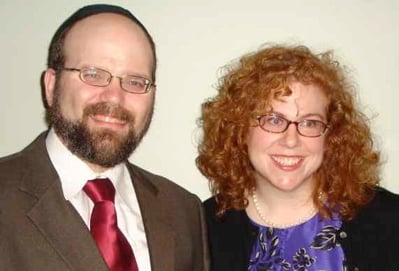Шломо Аргамон
Перейти к навигации
Перейти к поиску
Шломо Аргамон (англ. Shlomo Argamon) — американо-израильский компьютерный учёный и эксперт-лингвист, член Британского компьютерного общества[1].
Биография[править]
Родился в 1967 году.
Получил степень бакалавра прикладной математики в Университете Карнеги-Меллона, а также степень магистра и доктора философии в области компьютерных наук в Йельском университете под руководством Дрю МакДермотта. Провел два года, занимаясь постдокторскими исследованиями в Университете Бар-Илан в Рамат-Гане, Израиль.
С конца 1990-х годов работал в основном над вычислительным лингвистическим анализом.
Является штатным профессором компьютерных наук и директором программы «Магистр данных» в Иллинойском технологическом институте в Чикаго, штат Иллинойс.
Труды[править]
- Kenneth Bloom, Navendu Garg, and Shlomo Argamon. Extracting appraisal expressions. In Proc. Human Language Technologies: Conference of the North American Association for Computational Linguistics (NAACL-HLT), Rochester, New York, April, 2007.
- Casey Whitelaw, Navendu Garg, and Shlomo Argamon. Using appraisal groups for sentiment analysis. In Proc. Conference on Information and Knowledge Management, Bremen, Germany, November 2005.
- Shlomo Argamon, Ken Bloom, Andrea Esuli, and Fabrizio Sebastiani. Automatically Determining Attitude Type and Force for Sentiment Analysis. 3rd Language and Technology Conference, Poznan, Poland, October 2007.
- Lisa Gandy, Nadji Allan, Mark Atallah, Ophir Frieder, Newton Howard, Sergey Kanareykin, Moshe Koppel, Mark Last, Yair Neuman, Shlomo Argamon. Automatic identification of conceptual metaphors with limited knowledge. In Proc. Twenty-Seventh AAAI Conference on Artificial Intelligence (AAAI-13), Bellevue, WA, July 2013.
- Shlomo Argamon-Engelson and Ido Dagan. Committee-based sample selection for probabilistic classifiers. Journal of Artificial Intelligence Research, 11:335-360, 1999.
- Julio Ortega, Moshe Koppel, and Shlomo Argamon-Engelson. Arbitrating among competing classifiers using learned referees. Knowledge and Information Systems, 3(4):470–490, 2001.
- Argamon, Shlomo, Moshe Koppel, Jonathan Fine, and Anat Rachel Shimoni. "Gender, genre, and writing style in formal written texts." Text 23, no. 3 (2003): 321-346.
- Argamon, Shlomo, Moshe Koppel, James W. Pennebaker, and Jonathan Schler. "Automatically profiling the author of an anonymous text." Communications of the ACM 52, no. 2 (2009): 119-123.
- Argamon, Shlomo, Moshe Koppel, James W. Pennebaker, and Jonathan Schler. "Mining the Blogosphere: Age, gender and the varieties of self-expression." First Monday 12, no. 9 (2007).
- Argamon, Shlomo, Jean-Baptiste Goulain, Russell Horton, and Mark Olsen. "Vive la Différence! Text mining gender difference in French literature." Digital Humanities Quarterly 3, no. 2 (2009).
- Argamon, Shlomo, Russell Horton, Mark Olsen, and Sterling Stuart Stein. "Gender, Race, and Nationality in BlackDrama, 1850-2000: Mining Differences in Language Use in Authors and their Characters." Proceedings of Digital Humanities (2007).
- Hota, Sobhan R., Shlomo Argamon, and Rebecca Chung. "Gender in Shakespeare: Automatic stylistics gender character classification using syntactic, lexical and lemma features." Proc. Chicago Colloquium on Digital Humanities and Computer Science (DHCS) (2006).
- Argamon, Shlomo, Casey Whitelaw, Paul Chase, Sobhan Raj Hota, Navendu Garg, and Shlomo Levitan. "Stylistic text classification using functional lexical features." Journal of the American Society for Information Science and Technology 58, no. 6 (2007): 802-822.
- Argamon, Shlomo, and Moshe Koppel. "The rest of the story: Finding meaning in stylistic variation." In The Structure of Style, pp. 79-112. Springer, Berlin, Heidelberg, 2010.
- Argamon, Shlomo, Jeff Dodick, and Paul Chase. "Language use reflects scientific methodology: A corpus-based study of peer-reviewed journal articles." Scientometrics 75, no. 2 (2008): 203-238.
